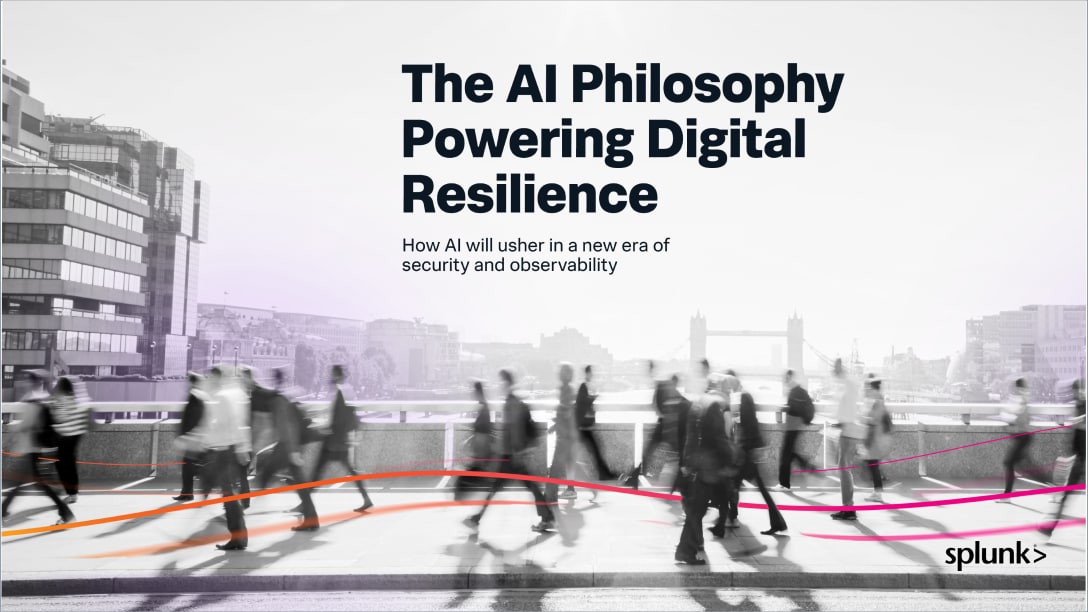Gain, Sustain, or Wait? Where Does AI Fit in Your Business Strategy?

From recommendation systems for online purchases to optimizing distribution and supply chains, AI has been prevalent across industries for decades. But until recently, AI was reserved for only those who could understand and implement algorithms, and harnessing the technology was reliant on data scientists. This meant that its primary use case was to improve business operations.
However, generative AI has shifted the focus to personal productivity: You no longer need to be an AI expert to benefit from the technology. In the workplace, it can help write proposals or assist with writing software. It can even help with holiday planning or provide recipe recommendations.
Over the past year, I’ve spoken to leaders across the globe about the potential of personal productivity. Here, I will dive into some key topics from those conversations and provide insight into what you might need to consider to benefit from AI at your organization. Throughout these sections, I have annotated which recommendations were brought up by most, some, or few leaders in conversation.
Managing risk
It’s not possible to mention AI without mentioning risk. Thankfully, many risks, such as bias, misinformation, transparency, and unintended consequences are well documented. These risks have prompted governing bodies worldwide to regulate the use of AI, like the EU’s Artificial Intelligence Act.
AI regulation tends to focus on well-defined risks, but what does the future hold? AI safety expert Stuart Russell, gave a TED talk where he outlined many risks of developing AI and defined some principles for safe development. Namely, that machines should be altruistic, uncertain of our objectives, and that they should learn more about our objectives by observing our behavior.
“We had better be quite sure that the purpose put into the machine is the purpose which we really desire.” — Norbert Wiener, 1960
During a roundtable event for leaders at .conf23, the topic of how generative AI has the potential to affect our thought processes came up in conversation. Studies have already shown that the internet affects our cognition, particularly how we store knowledge, given our access to vast information online. Generative AI will likely accelerate this trend, leading to the question of how we can adopt these technologies without losing expertise.
So, what does this mean for you?
- [Most] If you are considering adopting AI, make sure you know existing regulations — particularly if you are a global organization.
- [Some] Define an internal code of practice for acceptable AI use at your organization and set up a process to review the practice. The Alan Turing Institute has published helpful guidance on what to consider for your code of practice, especially their Support, Underwrite, and Motivate (SUM) values.
- [Few] If you are in the business of developing AI, define some clear principles to guide this development (noting that you may not need to go as far as Stuart Russell!)
Bridging the gap
If you can manage the risks around AI, getting AI into operational systems is the next challenge. Most organizations have separate operational and data science technology stacks and often struggle to bring the two together. Value realization then becomes difficult: Justifying an investment in sending data to multiple locations or asking teams to broaden their operations to use multiple tools can add complexity and cost.
So, what does this mean for you? The principles of “Keep it Simple” come into play here to get the most out of your technology investments. Ask yourself:
- [Most] What are the outcomes you are trying to achieve? Ensure you adopt generative AI in places that benefit the business most.
- [Few] How do you balance production use and experimentation? Examine your technology stack and figure out the critical integration points and processes. Also, consider the technologies, libraries, and frameworks shared across the different stacks. You want to make sure what you develop during an experiment will translate into production code.
- [Few] Can you get away with using simple methods? Often, simple statistics can provide approximations that are just as good as an advanced deep-learning algorithm.
Adopting automation
A common question I encountered over the past 12 months: “What can be automated so my team can focus on what they do best?” The potential for AI to impact this space is massive, from automated root cause analysis to fully autonomous penetration testing.
So what does this mean for you? The most important thing right now is to remain measured about what you can automate. AI is not a panacea. If you are early into adopting automation, some valuable steps are to:
- [Most] Start small and don’t automate everything at once. Pick one activity to focus on first.
- [Some] Gain visibility into where your team spends time and identify regular, time-consuming activities.
- [Some] Consider your automation tooling, process, and maintenance responsibilities. Scripts are fine in the short term, but could be difficult to maintain in the long run. Workflow actions or rules are better for longer-term maintenance, and a generative AI assistant could be a significant timesaver for making or aiding decisions in these workflows.
Upleveling your workforce
Data scientists are still hard to come by in most IT and security departments. Many organizations have centralized data science teams with resources that can provide consultancy or support across the business for AI use cases. This model works well for generic use cases, but has limited success where domain expertise is essential. Domain expertise is essential for security and IT teams, so they need an alternative model.
So what does this mean for you?
- [Most] If you don’t have the budget to hire data scientists, consider investing in tooling that can fill in the gaps. Just be mindful that generative AI is still an emerging technology.
- [Some] Having data scientists embedded within a SOC or IT department is becoming increasingly common, either to implement advanced detections or to support the threat hunting team.
- [Few] If you embed your data scientists across the business, make sure they have time to innovate and participate in regular cross-domain meetups to share knowledge.
- [Few] Set aside a training budget for SecOps and ITOps analysts who want to pursue data science. You may have a future superstar hidden in your team!
Lessons learned, strategies gained
Risk, technology integrations, automation, and skills are vital topics organizations should consider when adopting AI. Whether you are just starting and looking for some confidence to deploy or are already leveraging AI-enabled tools in your business, I hope these lessons have provided further inspiration for optimizing your strategy.
To find out what other predictions will shape the coming years, read Splunk’s 2024 Executive Predictions. And check out our AI Philosophy Powering Digital Resilience e-book to learn Splunk’s strategy for AI in our products, as well as guidance on using AI responsibly.
Related Articles
About Splunk
The world’s leading organizations rely on Splunk, a Cisco company, to continuously strengthen digital resilience with our unified security and observability platform, powered by industry-leading AI.
Our customers trust Splunk’s award-winning security and observability solutions to secure and improve the reliability of their complex digital environments, at any scale.


